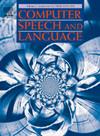Combined generative and predictive modeling for speech super-resolution
IF 3.4
3区 计算机科学
Q2 COMPUTER SCIENCE, ARTIFICIAL INTELLIGENCE
引用次数: 0
Abstract
Speech super-resolution (SR) is the task that restores high-resolution speech from low-resolution input. Existing models employ simulated data and constrained experimental settings, which limit generalization to real-world SR. Predictive models are known to perform well in fixed experimental settings, but can introduce artifacts in adverse conditions. On the other hand, generative models learn the distribution of target data and have a better capacity to perform well on unseen conditions. In this study, we propose a novel two-stage approach that combines the strengths of predictive and generative models. Specifically, we employ a diffusion-based model that is conditioned on the output of a predictive model. Our experiments demonstrate that the model significantly outperforms single-stage counterparts and existing strong baselines on benchmark SR datasets. Furthermore, we introduce a repainting technique during the inference of the diffusion process, enabling the proposed model to regenerate high-frequency components even in mismatched conditions. An additional contribution is the collection of and evaluation on real SR recordings, using the same microphone at different native sampling rates. We make this dataset freely accessible, to accelerate progress towards real-world speech super-resolution.
结合生成和预测建模的语音超分辨率
语音超分辨率(SR)是一种从低分辨率输入恢复高分辨率语音的任务。现有模型采用模拟数据和受限的实验设置,这限制了对现实世界sr的推广。已知预测模型在固定的实验设置中表现良好,但在不利条件下可能会引入伪像。另一方面,生成模型学习目标数据的分布,在未知条件下有更好的表现能力。在这项研究中,我们提出了一种新的两阶段方法,结合了预测模型和生成模型的优势。具体来说,我们采用了基于扩散的模型,该模型以预测模型的输出为条件。我们的实验表明,该模型在基准SR数据集上显著优于单阶段对应模型和现有的强基线。此外,我们在扩散过程的推理过程中引入了一种重涂技术,使所提出的模型即使在不匹配的条件下也能重新生成高频成分。一个额外的贡献是收集和评估真实的SR记录,使用相同的麦克风在不同的本地采样率。我们让这个数据集可以免费访问,以加速现实世界语音超分辨率的发展。
本文章由计算机程序翻译,如有差异,请以英文原文为准。
求助全文
约1分钟内获得全文
求助全文
来源期刊

Computer Speech and Language
工程技术-计算机:人工智能
CiteScore
11.30
自引率
4.70%
发文量
80
审稿时长
22.9 weeks
期刊介绍:
Computer Speech & Language publishes reports of original research related to the recognition, understanding, production, coding and mining of speech and language.
The speech and language sciences have a long history, but it is only relatively recently that large-scale implementation of and experimentation with complex models of speech and language processing has become feasible. Such research is often carried out somewhat separately by practitioners of artificial intelligence, computer science, electronic engineering, information retrieval, linguistics, phonetics, or psychology.
 求助内容:
求助内容: 应助结果提醒方式:
应助结果提醒方式:


